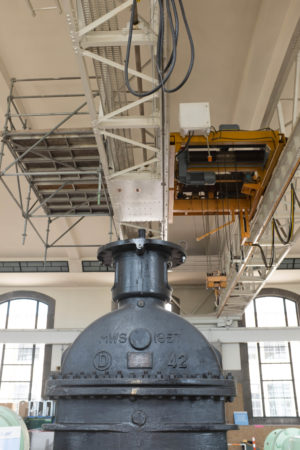What Vancouver means to me now
In many discussions over the years about the ethics of travel and climate change, I have pushed back against the idea that people need to travel with the counter-claim that they have structured their lives to create that apparent necessity. If you think you need routine visits with someone on the other side of the world, it is because you have both structured your lives with the assumption that rapid travel across the planet will and should be available.
Preparing for my trip to Vancouver in August and September for my brother Mica’s wedding (which is taking the place of the post-PhD trip I had been planning to settle my affairs and move everything out of my parents’ house) I am being reminded of how structuring your life to not include long-distance travel gradually erodes your connection to any distant communities that you had a link to. I had a nightmare a year or more ago about being in Vancouver with my laptop and address book, and realizing that I had nobody left to visit there. Aside from my parents, that’s now not massively far from the truth. I haven’t spent any significant amount of time in the city since I finished at UBC in 2005 and — even though I try to make a special effort to keep friendships going despite time and distance — it’s quite understandable that occasional Christmas and birthday emails haven’t sustained much of a connection with people who I knew from my undergraduate days and before. Back in my undergrad days, I would try to host a couple of big parties each year to help friends from different communities meet each other. If I tried to arrange a party now, I doubt whether anyone would come, if I could even put together a list of people in the city to invite.
Of course I don’t need a party of my own, and Mica and Leigh’s wedding should provide all the celebration anyone should need. Still, the feeling that I have hardly anyone to see in Vancouver reinforces my idea about the original purpose of this trip: to settle affairs in Vancouver such that nothing which I need to get done will necessitate another trip to the city. While the sense behind the sentiment is clear enough, I can’t help feeling somewhat sad and alienated to think of how the city’s role has transformed for me, from a home town which I felt I had explored extensively and knew well into a strange and changed place where I cannot see a place for myself economically, socially, or professionally. The fact that Toronto’s housing hell makes it hard to see a place for myself here too only adds to the sense of loss and alienation.
RC Harris water treatment plant pump room 1/3
Bill’s obvious joy and enthusiasm to be out walking were an inspiration
Exposure of individuals’ investments to the carbon bubble
Further substantiation of the carbon bubble / stranded assets argument that if governments act seriously on their climate goals then a huge amount of fossil fuel investment will become worthless:
Nature Climate Change study: Stranded fossil-fuel assets translate to major losses for investors in advanced economies
Guardian reporting: People in US and UK face huge financial hit if fossil fuels lose value, study shows
Related:
Solid colours
Palmistry
Cherubs and dogs want baguette
Wray on the suitability of emotions in response to climate change
Pain is a natural outcome of being told—and experiencing—that wildfires, hurricanes, and floods are becoming more ferocious due to the climate crisis, and that droughts are getting more serious and lasting longer. It is reasonable to get worried when the World Bank foresees that 140 million climate migrants will be fleeing ecological catastrophes and the knock-on effects of social strife within Latin America, sub-Saharan Africa, and south Asia by 2050, while other estimates put the number at over one billion. It is normal to get anxious about mass migrations and resource scarcity increasing the risk of violence and war. It is appropriate to grieve when the UN reports that humans are driving up to one million species to extinction, many within mere decades. It is logical to be horrified when a study shows that most trees alive today will be killed in massive die-offs within forty years if we don’t dramatically change course. It is understandable to be scared when a different study finds that Arctic permafrost is thawing at a rate that was predicted to happen seventy years from now, that the Greenlandic ice sheet has already melted beyond a point of no return, and that unchecked climate change could collapse entire ecosystems as soon as 2030. Stress is a suitable reaction when scientists say that by 2070, one to three billion people will be living in hot zones outside the temperature niche that has allowed human civilization to thrive over the last six thousand years. It is humane to be gutted when you learn that air pollution caused the premature deaths of nearly half a million babies in their first month of life over a twelve-month period. It is fitting to freak out when the World Meteorological Organization issues a report on the global climate that states “time is fast running out for us to avert the worst impacts of climate disruption and protect our societies from the inevitable impacts to come.” It is sensible to get spooked when a group of leading environmental researchers publish a paper that opens with the words, “The scale of the threats to the biosphere and all its lifeforms—including humanity—is in fact so great that it is difficult to grasp for even well-informed experts.” It is right to be pissed off when you learn that we’ve emitted more carbon dioxide since the UN established its framework convention on climate change in 1992—that is, since we have been making an intergovernmental effort to reduce our emissions—than in all the millennia before then. And it is decent to rage once you understand how deeply the fossil fuel industry has manipulated the political system and misinformed the public, valuing money over our survival. There is nothing pathological about this pain. It is an unavoidable symptom of a very sick society.
…
At this late stage in the climate crisis—a scientifically proven anthropogenic phenomenon that’s been debated on baseless claims for decades—I would suggest eco-anxiety is merely a sign of attachment to the world.
Wray, Britt. Generation Dread: Finding Purpose in an Age of Climate Crisis. Knopff, 2022. p. 19-21







